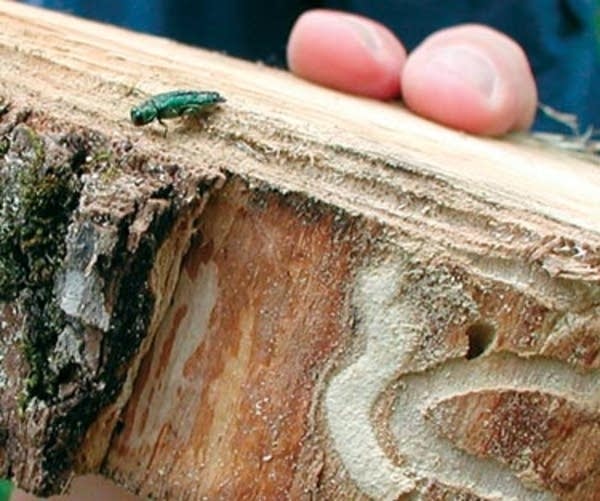Emerald ash borer spreads to N. Ramsey county

Emerald ash borer appears to have spread to another neighborhood in the Twin Cities metro. Minnesota Department of Agriculture officials Thursday confirmed an emerald ash borer infestation in Shoreview in northern Ramsey county.
That's 10 miles from the nearest infested parts of the Twin Cities, in Minneapolis, St. Paul and Falcon Heights. The spread of emerald ash borer is not surprising, said Allen Sommerfeld, communications coordinator with Minnesota Department of Agriculture.
"It did travel some distance from its current location, so it was probably helped along in some way but we're certainly not surprised that it is spreading around the state," Sommerfeld said.
Emerald ash borer also has been confirmed in Houston County in southeastern Minnesota.
Create a More Connected Minnesota
MPR News is your trusted resource for the news you need. With your support, MPR News brings accessible, courageous journalism and authentic conversation to everyone - free of paywalls and barriers. Your gift makes a difference.
The agriculture department has tracked the insect since 2009. This summer, 4,500 traps were suspended in trees in an effort to find out if the tiny insect has spread to other areas. Those traps won't come down until fall, Sommerfeld said.
Emerald ash borer has no known natural predators in Minnesota. But the agriculture department, along with federal authorities, have released wasps in Houston county and other locations that are expected to prey on the emerald ash borer. The wasps do not sting people.
Emerald ash borer is most destructive in its larval stage. The larvae burrow into ash trunks and feed on the nutrients. The agriculture department estimates the insect has killed millions of ash trees in 15 states.
Infested trees look noticeably different from healthy ones, Sommerfeld said.
"Of course, if you have trees that are in decline," Sommerfeld said, "particularly the top canopy is thinning out and the tree is dying off.
"And there are shoots that are growing up from the base of the tree — those are all telltale signs that something might be wrong with your ash tree. And we suggest you contact a tree care company or your city forester and have them come out and take a look at it."
One way to slow the spread of emerald ash borer is to keep firewood and ash products where the wood was harvested and not transport it elsewhere, Sommerfeld said. There already are quarantine restrictions in place in Hennepin, Ramsey and Houston counties where infestations are confirmed.
